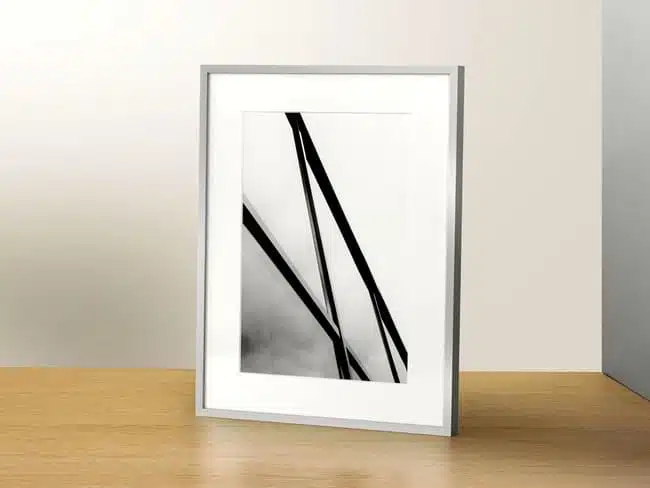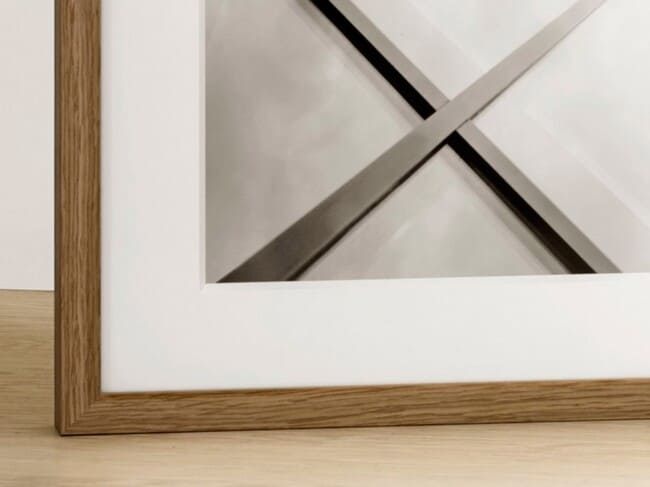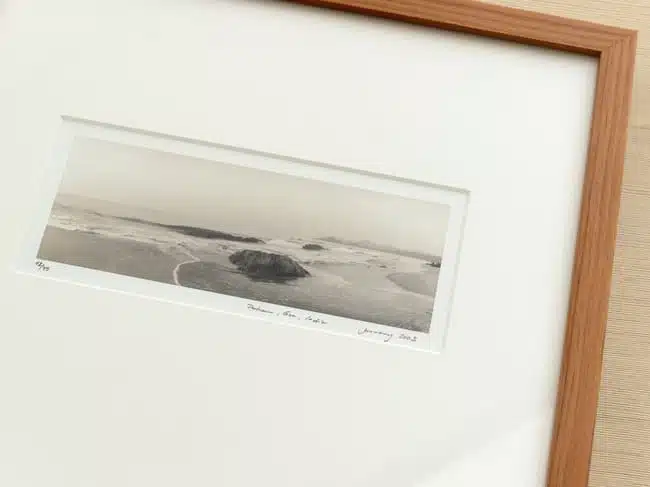What is a mount?
A passepartout is a cardboard cut out in the middle that is placed in your picture frame between the picture and the glass. The passepartout is available in various shapes and colours, which gives you a lot of design freedom and so there are no limits to your creativity. In this way, a passepartout is an additional frame for your picture. The distance between the glass and the surface of the picture is increased and a depth effect is created, which draws even more attention to the picture. The passe-partout therefore separates the picture even more from its environment and the frame, without itself (with the right choice of colour) being too conspicuous. Framing with a passepartout is one of the most original forms of picture presentation.

The passepartout completes the framing
The passepartout is an important design element for perfect framing. Not only can valuable works of art be stylishly framed with passepartouts, but photos, for example wedding pictures or children's photos, are also shown off to their best advantage with a passepartout, as the additional framing draws attention to the essentials, namely the picture. Small pictures also look particularly beautiful when they are framed in a larger picture frame with a passepartout . Despite this great function as an important design element, many people still opt for framing without a passepartout. Below we give you 5 reasons why you should not do without a passepartout from now on.
1. Depth Effect
With a passepartout you create a unique depth effect. Depending on the thickness of the passepartout, this effect is intensified or weakened. In general, however, it can be said that a passepartout gives your picture more liveliness and offers it more room to unfold. The attention is drawn even more to the picture by the additional frame and thus sets it optimally in scene.
2. Protection
A passepartout offers your picture the perfect protection. On the one hand, the passepartout creates a space between the glass and the picture, so that the glass surface does not lie directly on the picture and the picture surface is optimally protected. On the other hand, the passepartout protects the picture from too much humidity, because the passepartout absorbs the prevailing humidity before it can reach the picture. We use certified passepartouts from Klug - Conservation. These are acid-free and age-resistant and thus offer your artwork active protection.
3. Individuality
With a passepartout you have the possibility to make your frame and your picture even more individual. In addition to the classic passepartout boxes in rectangular format, you can also purchase heart-shaped or decorated passepartout boxes. This way you get the passepartout that fits best to your picture.
4. Variation
Of course, you can also play with different sizes and let your creativity run free. There are no limits to what you can do. For example, you can use a smaller passepartout to highlight only part of the picture without damaging the rest of the picture. Or you can show off a small picture in style by placing it in a larger frame with a matching passepartout. A passepartout in landscape format, inserted in a portrait format frame, also exudes a certain charm. Please note, however, that the framing should never dominate the picture, but only support the effect.
5. Play of colours
You have countless possibilities when it comes to choosing the colour of the passepartout. The decision ultimately depends on personal taste. When choosing colour, you should make sure that the main colours of the picture are taken up in order to achieve a coherent overall effect. For handmade prints or handmade paper, for example, a passepartout in natural white is a good choice. If you are framing black and white motifs, you can choose a light passepartout to achieve a classic result, but framing with a black passepartout also looks very stylish.

Tips for choosing the right size:
How wide your passepartout ends up being is a matter of taste, but in general it can be said that the width of the passepartout border is about 10-12% of the measurement of the longer side. The passepartout cut-out should be 1 cm smaller all round than your picture to ensure that the picture is well covered by the passepartout. You can also use our frame configurator to help you with your selection. Select a frame and add a passepartout, the configurator will automatically show you the matching passepartout. If you need further help in choosing your passepartout cutout, you will find a table here that lists the most common picture formats and the matching passepartouts. Of course, our customer service will also be happy to help you!
